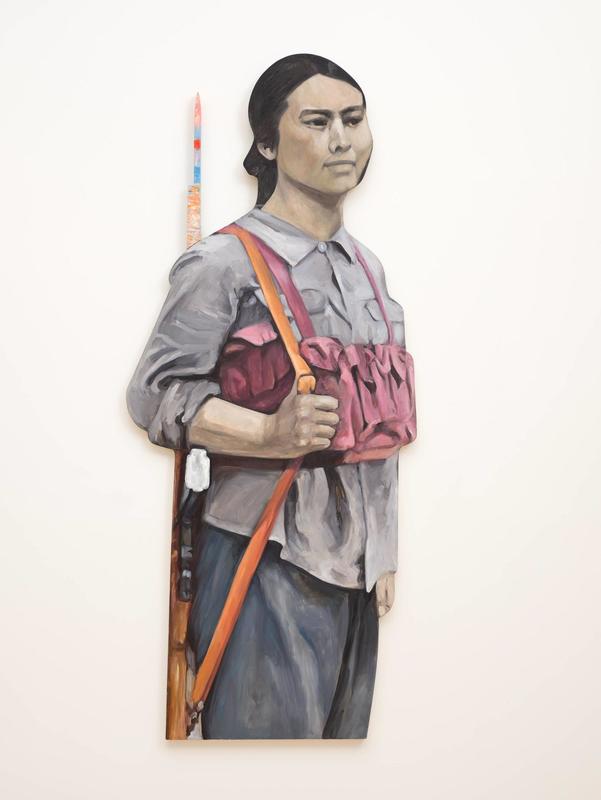More about Avant-Garde

Contributor
Hung Liu is a tremendous artist and also a total bad-ass.
Though she emigrated to the United States in 1984, the first decades of her life were spent in China navigating the political and personal chaos of the Chinese Cultural revolution. As a young adult, she was sent to work in the fields of China as a laborer, working seven days a week.
Although photography was strictly prohibited, Liu, a natural rebel, got a hold of a camera and took pictures of village life so that she could spend time sketching them later— the beginning of her long-standing practice of drawing from photographs, like she does here in Avant-Garde. After two years of agricultural labor, recruiters came to the fields looking for students and she was sent off to Beijing’s Teacher College, where her formal artistic training began. She called the Socialist Realist style she learned there “social surrealism,” declaring that nothing in the real world actually looks like what is depicted in Chinese propaganda. During those years, she was also forced to spend time in the countryside training with soldiers and learning how to use a semi-automatic weapon to combat the threat of American Imperialism— becoming, in her own words, “a top shooter.” This is where the photograph that was the source of inspiration for this self-portrait was taken.
It’s a striking piece, simple but stoic. Liu adds bright, pastel colors to what was originally a black and white photo, giving it a lighter, more personal touch, juxtaposed with the weapon strapped to her back. Liu also removes the field and instead chooses to set the figure against a blank white background, making her seem even more solitary, isolated, and contemplative.
The stylization of the portrait isn’t wildly unlike the “Socialist Realism” Liu learned in college— realistic, simple, and stark. The girl may not be smiling, but neither is she snapping the gun in half over her leg. Instead, there’s a quiet sort of resistance in her portrait, a steadiness that feels reflective of Liu’s own experience enduring this time in her life.
The name itself is also a kind of resistance— a play on the homonym “Guard” and an acknowledgement of what society considers new and unusual: the woman soldier, the Chinese contemporary artist.
Sources
- Cotter, H. (2021, August 22). Hung Liu, artist who Blended east and West, is dead at 73. The New York Times. Retrieved September 25, 2021, from https://www.nytimes.com/2021/08/22/arts/hung-liu-artist-dead.html.
- Curator. (n.d.). Strange Fruit. Strange fruit: New paintings by Hung liu – LAGUNA Art Museum. Retrieved September 25, 2021, from https://lagunaartmuseum.org/exhibitions/strange-fruit-new-paintings-by-….
- Hirsch, K. (n.d.). Hung Liu Essay: BIO. Displacements. Retrieved September 25, 2021, from https://displacements.org/artists/hung-liu/.
- SFMOMA. (n.d.). Hung Liu on guns, art, history, forced labor, and taboos. SFMOMA. Retrieved from https://www.sfmoma.org/watch/hung-liu-on-guns-art-history-forced-labor-….












A talented artist taken from us far too soon.